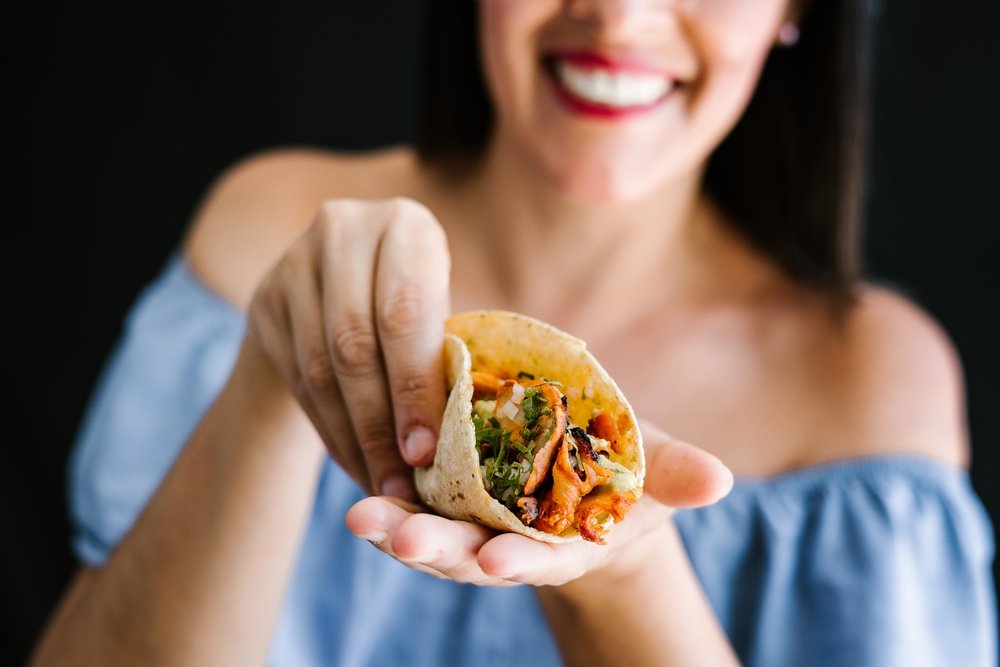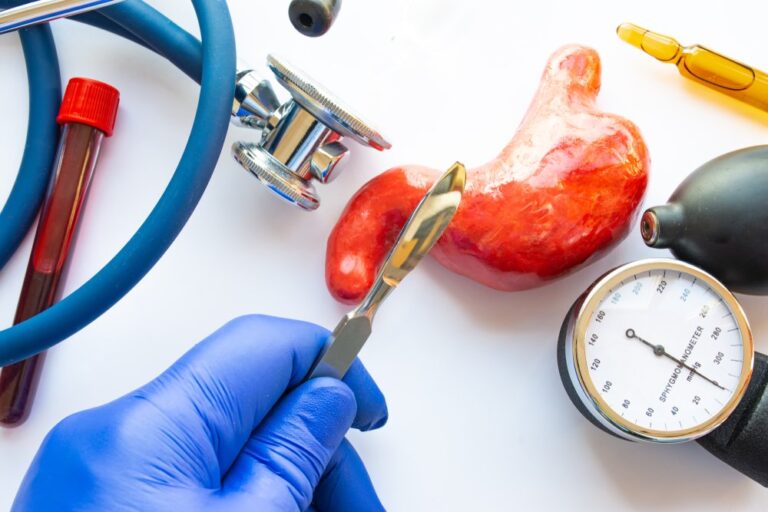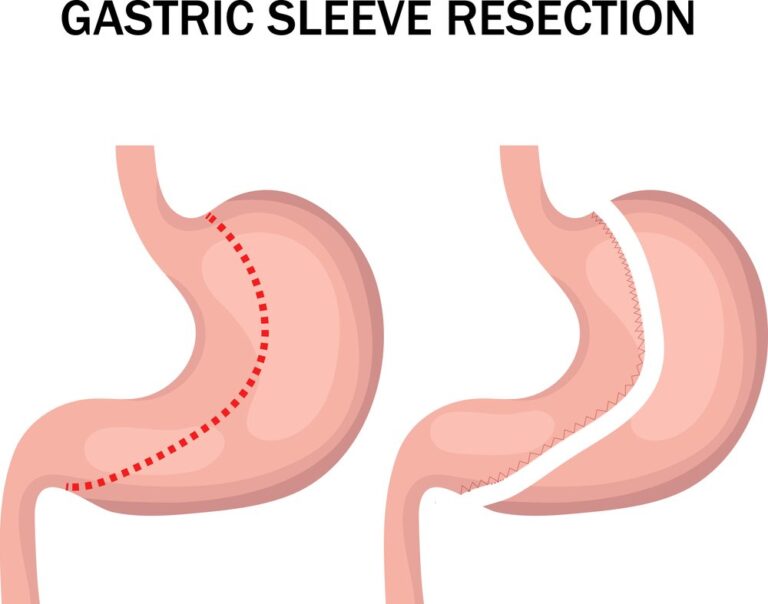After gastric sleeve surgery, the timing for reintroducing tortillas into your diet may vary based on your individual healing and recovery progress. It’s essential to follow the dietary guidelines provided by your healthcare team. Typically, in the early post-surgery phase, the emphasis is on consuming a liquid and pureed diet to allow your stomach to heal.
As you progress through the stages of the diet, soft or mashed foods are gradually introduced. Your healthcare provider or dietitian will guide you on when you can start incorporating soft solid foods like tortillas into your diet. It’s important to chew your food thoroughly and listen to your body’s signals to ensure comfort and proper digestion. Always consult with your healthcare team for personalized advice based on your specific needs and recovery progress.
Get a $1000 Off on Gastric Sleeve in Miami
When Can You Start Introducing Soft Foods After Gastric Sleeve Surgery?
The timing for introducing soft foods after gastric sleeve surgery can vary depending on your individual progress and the specific guidelines provided by your healthcare team. Generally, soft foods are introduced in the second stage of the post-surgery diet, which typically occurs about two to four weeks after the procedure. However, it’s important to note that this timeline may vary, and you should follow the specific recommendations given by your healthcare provider.
During the soft foods stage, you can gradually introduce foods with a softer texture, such as cooked vegetables, lean ground meats, soft fruits, and well-cooked grains. It’s crucial to chew your food thoroughly and eat slowly to ensure proper digestion and minimize any discomfort. Following portion control and eating balanced meals that provide adequate protein, vitamins, and minerals is essential during this phase.
Guidelines for Adding Tortillas to Your Diet
When incorporating tortillas into your diet after gastric sleeve surgery, it’s important to follow certain guidelines to ensure a safe and comfortable transition. Here are some general recommendations:
- Consult with your healthcare team: Before adding tortillas to your diet, consult with your surgeon or registered dietitian to determine the appropriate timing and portion sizes based on your individual progress and dietary needs.
- Start with soft tortillas: Opt for soft tortillas instead of crispy or hard ones, as they are easier to chew and digest. Look for tortillas that are low in fat and made with whole grains for added nutritional value.
- Portion control: Pay attention to portion sizes to avoid overeating. Start with smaller portions and gradually increase as tolerated. Remember that your stomach capacity has been reduced, so listening to your body’s signals of fullness is crucial.
- Chew thoroughly: Take small bites and chew your tortilla thoroughly to aid digestion. Chewing your food well helps prevent discomfort and promotes proper nutrient absorption.
- Monitor your tolerance: Pay attention to how your body responds to tortillas. If you experience any discomfort, bloating, or indigestion, it may be a sign that you need to adjust the portion size or delay the introduction of tortillas.
- Prioritize protein and nutrients: Ensure that your tortillas are accompanied by protein-rich fillings, such as lean meats, beans, or tofu, to promote satiety and provide essential nutrients. Incorporate a variety of vegetables and healthy fats to create a balanced and nutritious meal.

Always follow the guidance of your healthcare team and listen to your body’s signals. Individual tolerance and preferences may vary, so it’s important to tailor your diet to your specific needs. Regularly communicate with your healthcare provider or dietitian to monitor your progress and make any necessary adjustments to your diet plan.
Preparing and Modifying Tortillas for Easier Consumption
When preparing and modifying tortillas for easier consumption after gastric sleeve surgery, there are several options you can consider:
- Softening the tortillas: To make tortillas easier to chew and digest, you can warm them up slightly in the microwave or on a stovetop. This can help soften them and make them more pliable.
- Cutting tortillas into smaller pieces: Instead of consuming a full-sized tortilla, consider cutting it into smaller portions or bite-sized pieces. This can make it easier to manage portion control and reduce the amount of food you need to chew.
- Choosing smaller tortillas: Opt for smaller-sized tortillas, such as street taco-sized or mini tortillas. These are naturally smaller in diameter, making them more manageable and easier to consume.
- Filling options: Choose fillings that are soft and easy to chew, such as cooked vegetables, lean proteins (like shredded chicken or turkey), or mashed beans. Avoid hard or tough fillings that may require excessive chewing.
- Adding moisture: If you find the tortillas dry or difficult to chew, consider adding moisture to them. You can lightly brush them with a small amount of low-fat dressing, salsa, or a thin layer of Greek yogurt to make them easier to swallow.
Remember to introduce tortillas and any modifications gradually, following the guidelines provided by your healthcare team. Everyone’s tolerance and preferences may vary, so it’s important to listen to your body and make adjustments as needed. Consulting with a registered dietitian can also provide you with personalized recommendations for preparing and modifying tortillas to suit your specific dietary needs after gastric sleeve surgery.
Why Is Texture Modification Important for Post-Surgery Eating?
Texture modification is important for post-surgery eating, especially after procedures like gastric sleeve surgery, for several reasons:
| Importance of Texture Modification for Post-Surgery Eating |
|---|
| 1. Easier digestion |
| 2. Enhanced nutrient absorption |
| 3. Reduced risk of complications |
| 4. Gradual reintroduction of foods |
| 5. Portion control and mindful eating |
Portion Control Strategies When Incorporating Tortillas
When incorporating tortillas into your diet, here are some portion control strategies to consider:
- Choose smaller tortillas: Opt for smaller-sized tortillas, such as corn tortillas or whole wheat tortillas. These tend to have fewer calories and can help with portion control.
- Measure your fillings: Use measuring cups or a food scale to portion out the fillings for your tortillas. This can help you keep track of the amount you’re consuming and avoid overfilling.
- Fill with nutritious ingredients: Focus on adding nutrient-dense ingredients to your tortillas, such as lean proteins (e.g., grilled chicken, turkey, or tofu), plenty of vegetables (e.g., lettuce, tomatoes, peppers), and a small amount of healthy fats (e.g., avocado or a drizzle of olive oil).
- Be mindful of portion size: Pay attention to your body’s hunger and fullness cues. Start with a smaller portion and take your time to enjoy each bite. Give yourself permission to stop eating when you feel satisfied.
- Balance your meal: Consider serving your tortillas with a side of salad or steamed vegetables to add more volume and nutrients to your plate. This can help you feel more satisfied with a smaller portion of tortillas.
- Seek guidance from a dietitian: Consulting with a registered dietitian can provide personalized portion control strategies and recommendations based on your specific needs and goals.
Remember, portion control is key to maintaining a healthy balance in your diet after gastric sleeve surgery. By being mindful of your portion sizes and making nutritious choices, you can enjoy tortillas while still supporting your weight loss and overall well-being.

When Should You Consult Your Healthcare Team About Including Tortillas?
It is important to consult your healthcare team, specifically your surgeon and registered dietitian, before including tortillas or any specific food item in your diet after gastric sleeve surgery. They can provide personalized guidance based on your individual health status, surgical procedure, and progress. Here are some situations when you should consult your healthcare team:
- Post-surgery guidelines: Follow the dietary guidelines provided by your healthcare team during the recovery period. They will specify when you can start introducing solid foods, including tortillas, into your diet.
- Individual dietary plan: Your healthcare team will create a customized dietary plan based on your specific needs, including portion sizes, nutritional requirements, and any restrictions. It is important to consult them to ensure that including tortillas aligns with your plan.
- Healing progress: If you experience any complications or delays in your healing process, it is essential to inform your healthcare team. They will evaluate your condition and advise on when it is appropriate to introduce tortillas or any other specific foods.
- Weight loss progress: Your healthcare team will monitor your weight loss progress and provide recommendations on food choices to support your goals. They can help determine the appropriate timing and portion sizes for incorporating tortillas based on your progress.
- Individual tolerance: Everyone’s tolerance to different foods may vary after gastric sleeve surgery. If you have concerns about your ability to tolerate tortillas or any other specific food, it is best to consult your healthcare team for guidance.
Remember, the guidance of your healthcare team is crucial in ensuring a safe and successful recovery after gastric sleeve surgery. They will provide you with the most accurate and personalized advice regarding the inclusion of tortillas in your post-surgery diet.
The Importance of Individualized Advice for Safe and Successful Eating
Individualized advice is crucial for safe and successful eating after gastric sleeve surgery. Here’s why:
- Personalized recommendations: Each individual’s surgery, health condition, and weight loss goals are unique. An individualized approach ensures that dietary recommendations align with specific needs and circumstances, taking into account factors such as overall health, nutrient requirements, and tolerance to certain foods.
- Optimal healing and recovery: Following personalized advice promotes proper healing and recovery after surgery. The guidance provided by healthcare professionals considers the body’s healing process, ensuring that the right nutrients are consumed in appropriate portions to support tissue repair and overall well-being.
- Weight management: Individualized advice helps individuals achieve and maintain a healthy weight after surgery. Healthcare professionals can provide tailored recommendations regarding portion sizes, food choices, and nutrient distribution to support optimal weight loss while ensuring adequate nutrition and long-term weight management.
- Nutritional balance: Proper nutrition is essential for overall health and well-being. Individualized advice helps individuals meet their nutritional needs, ensuring an adequate intake of essential vitamins, minerals, and macronutrients. This can help prevent nutrient deficiencies and promote optimal health.
- Addressing specific concerns and challenges: Individualized advice takes into account specific concerns or challenges that individuals may face, such as food intolerances, dietary restrictions, or difficulty with certain textures. Healthcare professionals can provide guidance on alternative food options, modifications, or strategies to overcome challenges and ensure a well-rounded diet.
- Long-term success: Following personalized advice sets individuals on the path to long-term success. By receiving tailored recommendations and ongoing support from healthcare professionals, individuals can develop sustainable eating habits, make informed choices, and maintain their weight loss goals over time.
Overall, individualized advice plays a critical role in ensuring safe and successful eating after gastric sleeve surgery. It takes into account individual needs, promotes proper healing, supports weight management, and provides the necessary guidance for long-term success on the post-surgery journey.
References:
- American Society for Metabolic and Bariatric Surgery. (2021). Diet & Nutrition. Retrieved Jan 8, 2021
- Mayo Clinic. (2022). Gastric Sleeve Surgery: What You Can Expect. Retrieved June 15, 2022






